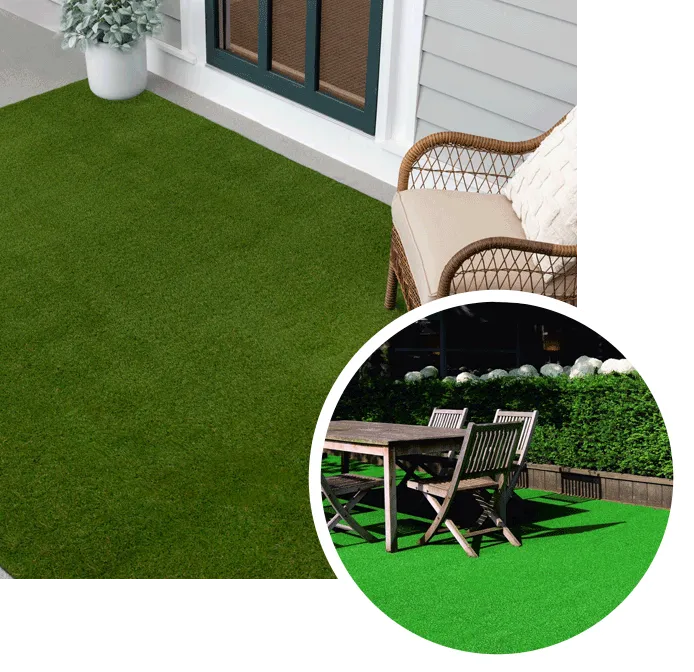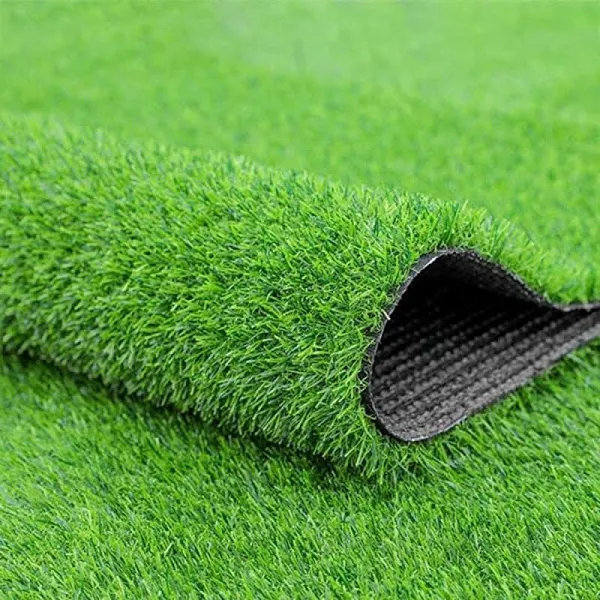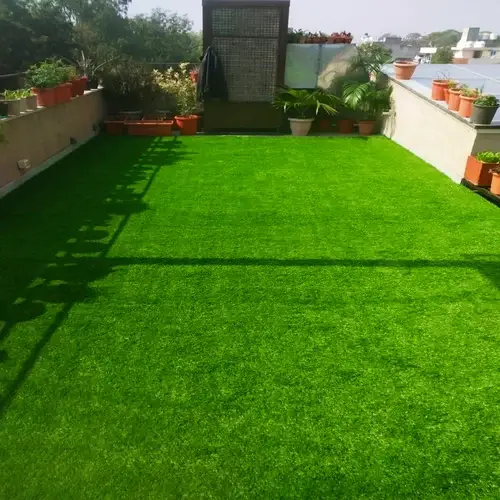A Grass carpet is a type of flooring material designed to resemble natural grass. It is typically made from synthetic fibers or natural materials such as sisal or jute, and it comes in various shades of green to mimic the appearance of real grass. Green Grass carpet texture offers a convenient and versatile alternative to traditional flooring options, bringing the beauty of the outdoors inside.
Overview of its Uses and Benefits:
Grass carpets find applications in both residential and commercial settings. In homes, they are often used to create cozy outdoor living spaces on balconies, terraces, or patios, providing a soft and comfortable surface for relaxation and leisure activities. Additionally, outdoor grass carpet texture can be installed indoors to bring a touch of nature to interior spaces, such as playrooms, bedrooms, or recreation areas.
In commercial settings, Green grass carpet texture are commonly used for landscaping purposes, such as in parks, gardens, and public spaces, where they offer a low-maintenance and aesthetically pleasing solution for enhancing outdoor areas.
The benefits of grass carpets include their durability, easy installation, and low maintenance requirements. They provide a soft and cushioned surface that is safe for children and pets to play on, and they can help to create a more inviting and relaxing atmosphere in any environment.
Types of Grass Carpets
Natural Grass Carpets
Natural green grass carpets are made from real grass that is grown and harvested for use as flooring material. They consist of individual grass blades attached to a backing material, usually made from biodegradable materials like jute or woven fabric.
Characteristics:
Natural grass carpets offer a lush and authentic appearance, with varying shades of green and a soft texture underfoot.
Artificial Grass Carpets
Artificial grass carpet Dubai, also known as synthetic turf or fake grass, are made from synthetic fibers such as polyethylene, polypropylene, or nylon. They are designed to closely resemble natural grass and come in a variety of colors, textures, and pile heights.
Characteristics:
Artificial grass carpet texture offers a durable and low-maintenance alternative to natural grass. They are resistant to fading, staining, and wear, making them ideal for high-traffic areas and outdoor use. Additionally, artificial grass carpet dubai can be installed on various surfaces, including concrete, soil, or decking.
Nylon Grass Carpets:
Nylon is known for its durability and resilience, making it suitable for high-traffic areas. Nylon grass carpets are often used in sports fields and commercial spaces.
Polyethylene Grass Carpets:
Polyethylene is soft, making it ideal for residential lawns and landscaping. It provides a natural look and feel and is UV-resistant, which helps prevent fading.
Blended Grass Carpets:
Some grass carpets combine different materials to achieve specific characteristics. For example, a blend of nylon and polyethylene may offer both durability and softness.
Versatile Solutions Exploring the Applications of Grass Carpets
Landscaping:
Grass carpets are commonly used in residential landscaping to create lush and green outdoor spaces. They can be installed as a lawn alternative or as decorative patches within existing landscaping, providing a natural and visually appealing backdrop for outdoor activities and relaxation.
Gardens:
In gardens, green grass carpets serve as a versatile ground cover option for pathways, borders, and play areas. They add a touch of greenery and soften the overall landscape design, creating a serene and inviting atmosphere for homeowners to enjoy.

Sports Fields:
Grass carpets are widely used in commercial sports fields, such as soccer fields, football fields, and golf courses. Synthetic turf varieties offer a durable and consistent playing surface that can withstand heavy use and inclement weather conditions, ensuring optimal performance for athletes and players.
Events or Exhibitions:
In event spaces and exhibition halls, outdoor grass carpets are utilized to create visually stunning displays and thematic environments. They serve as versatile flooring options for indoor and outdoor events, adding a touch of natural beauty and enhancing the overall ambiance for attendees and participants.
Decorative Landscaping:
In commercial settings such as hotels, resorts, and shopping centers, grass carpets are employed for decorative landscaping purposes. Whether used as a focal point in atriums and lobbies or as accent features in outdoor courtyards and plazas, grass carpets contribute to a welcoming and aesthetically pleasing environment for visitors and guests.
Efficient Installation and Maintenance Practices for Grass Carpets
Preparation of Surface:
Before installing a grass carpet, it is essential to prepare the surface properly. This typically involves clearing the area of any debris, weeds, or uneven patches. The surface should be leveled and compacted to ensure a smooth and stable base for the carpet. Additionally, drainage considerations may need to be addressed to prevent water buildup and potential damage to the carpet.
Installation Process:
The installation process for a grass carpet varies depending on whether it is natural or artificial. For natural grass carpets, sod or turf rolls are typically laid out and carefully aligned to create a seamless and uniform appearance. Artificial grass carpet texture are installed in a similar manner but require additional steps such as securing the edges with adhesive or nails and infilling the turf with sand
Maintenance Tips:
Proper maintenance is crucial for ensuring the longevity and appearance of a grass carpet. For natural grass carpets, regular watering, mowing, and fertilizing are necessary to promote healthy growth and prevent weed invasion. Grass carpets require less maintenance but still benefit from occasional brushing or raking to remove debris and maintain the upright position of the fibers. Additionally, periodic inspections for signs of wear or damage and prompt repairs as needed can help prolong the lifespan of the carpet and ensure continued enjoyment of its benefits.
Grass Carpets Dubai
Environmental Impact Exploring the Consequences of Human Activity
- Comparison between Natural and Artificial Grass:
When comparing natural and artificial grass, it’s essential to consider their environmental impacts. Natural grass contributes positively to the environment by absorbing carbon dioxide, releasing oxygen, and helping to cool the surrounding area through transpiration. However, it requires regular watering, fertilizing, and mowing, which can lead to water consumption, chemical runoff, and emissions from lawn equipment. On the other hand, artificial grass conserves water and eliminates the need for pesticides and fertilizers. However, it is typically made from non-biodegradable materials and can contribute to heat island effects in urban areas.
- Sustainable Practices:
To mitigate the environmental impact of grass carpets, sustainable practices can be adopted. This includes choosing natural grass varieties that are drought-tolerant and require minimal maintenance, reducing water consumption and chemical use. For artificial grass, selecting products made from recycled materials and promoting proper disposal and recycling at the end of their lifespan can help minimize waste and resource consumption.
- Recycling and Disposal:
At the end of their lifespan, both natural and grass carpets should be disposed of responsibly to minimize environmental impact. Natural grass can be composted or recycled into organic matter for landscaping or agricultural purposes. Artificial grass, while not biodegradable, can be recycled into secondary products such as drainage systems or playground surfaces. Proper disposal methods ensure that grass carpets are diverted from landfills and contribute to a more sustainable waste management system.
Budgeting for Beauty Exploring Grass Carpet Cost Considerations
- Initial Investment:
The initial investment for grass carpets varies depending on factors such as the type of carpet (natural or artificial), the quality of materials, and the size of the area to be covered. Natural grass carpets typically require higher upfront costs due to expenses associated with sod or turf installation, soil preparation, and ongoing maintenance equipment. Artificial grass carpet texture may have a higher initial cost due to the price of materials and installation labor, but they often offer long-term savings in maintenance and water consumption.
- Long-term Expenses:
While natural grass carpets may have lower initial costs, they often entail higher long-term expenses associated with maintenance, such as watering, mowing, fertilizing, and pest control. Additionally, natural grass may require periodic replacement due to wear and tear or damage from pests and weather conditions. In contrast, artificial grass carpet uae have minimal long-term expenses, as they require little to no maintenance, no watering, and are resistant to fading and wear. Over time, the savings in maintenance costs can offset the initial investment.
- Value for Money:
When considering the overall value for money, it’s essential to weigh the upfront costs against the long-term benefits and savings. While natural grass carpets may offer a more traditional and authentic look, artificial grass carpet uae provide convenience, durability, and sustainability. Ultimately, the value for money depends on individual preferences, budget constraints, and the specific requirements of the project.
Conclusion
Recap of Grass Carpet’s Versatility:
In conclusion, grass carpets offer a versatile and practical solution for enhancing indoor and outdoor spaces. Whether it’s creating lush landscapes in residential gardens or providing durable flooring options for commercial sports fields, grass carpets add natural beauty and functionality to any environment.
Summary of Key Points:
Throughout this discussion, we’ve explored the different types of grass carpets, including natural and artificial varieties, and their respective characteristics, applications, and environmental impacts. We’ve also considered cost considerations and the value for money associated with grass carpet installations.
Future Trends and Developments:
Looking ahead, future trends and developments in the grass carpet industry may focus on sustainable practices, technological advancements, and innovative design solutions. With growing concerns about environmental conservation and resource management, there is a growing demand for eco-friendly and low-maintenance alternatives to traditional landscaping and flooring materials. Additionally, advancements in artificial grass technology may lead to improved durability, realism, and performance, further expanding the applications and appeal of grass carpets in various settings.
In summary, grass carpets continue to evolve as a versatile and sustainable solution for enhancing outdoor and indoor spaces, offering aesthetic appeal, functionality, and environmental benefits for homeowners, businesses, and communities alike. As the industry continues to innovate and adapt to changing needs and preferences, grass carpets will remain a timeless and enduring choice for enhancing the beauty and functionality of any environment.



